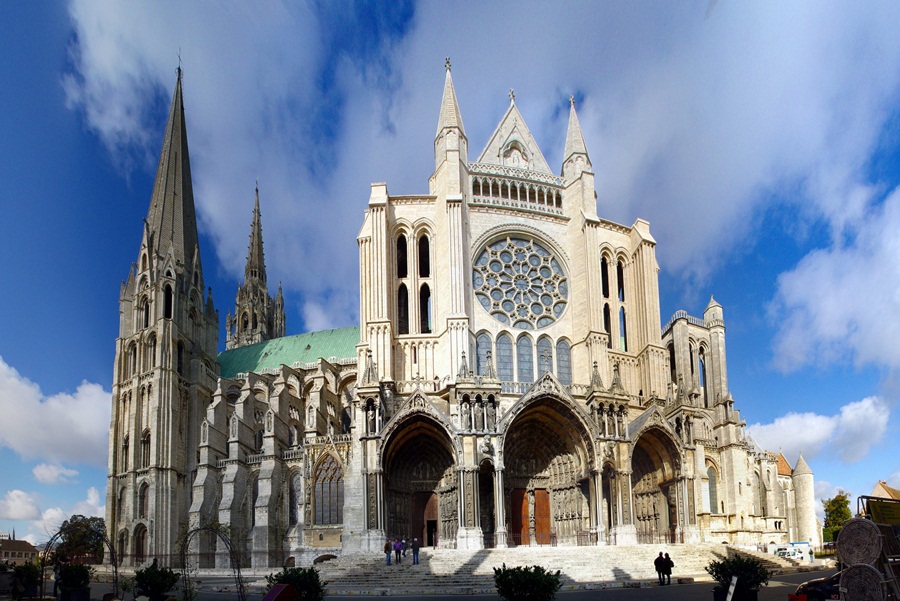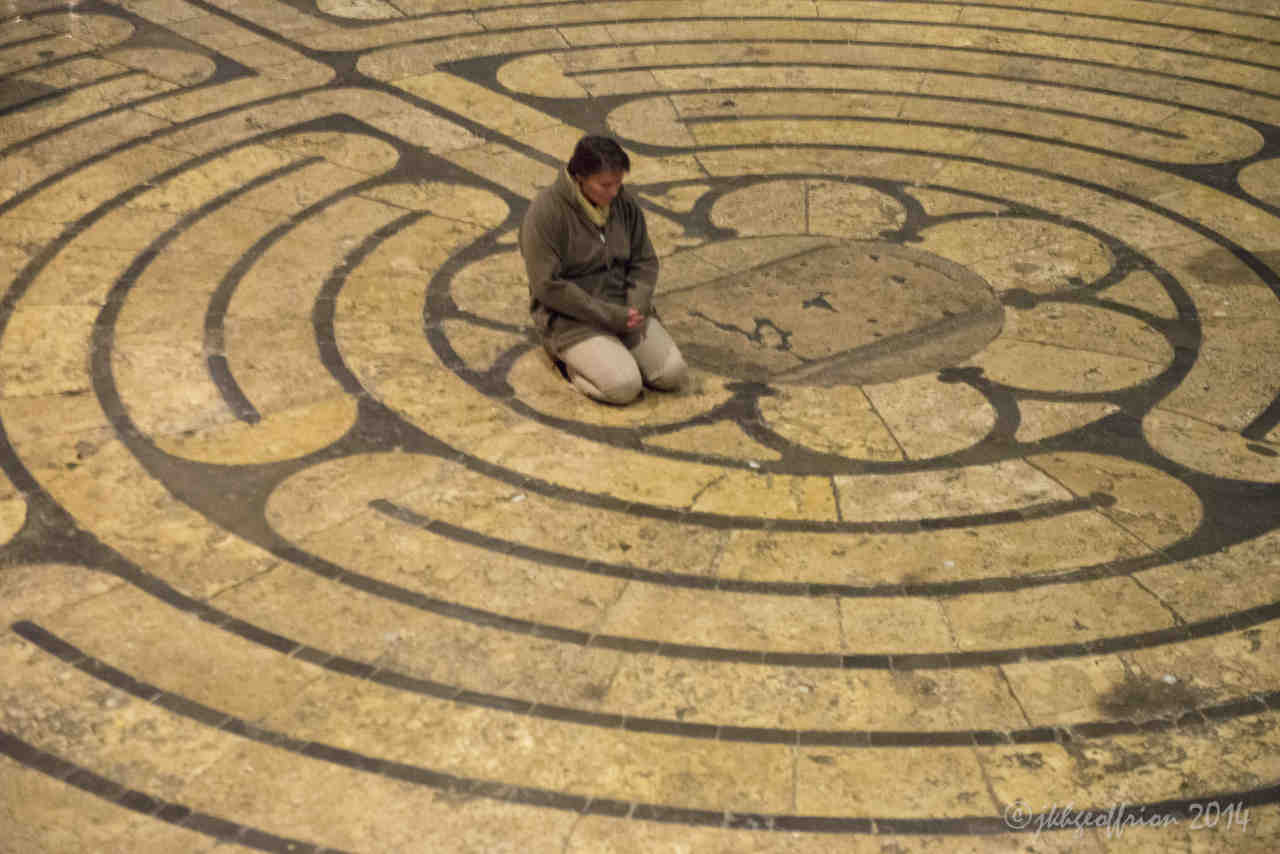Your Journey Begins
Last week at my church the theme was “pilgrimage,” and my pastor asked me if I would say a few words about my trip last summer to Chartres, France. I was more than happy to, as I’m always looking for ways to share this astounding journey. When I sat down to organize my notes, however, I was quickly overwhelmed. I simply could not get my thoughts into a 2 or 3 minute “talk.” So, in typical Bethany Reid fashion, I decided to wing it. This is a rough transcript of what I shared. (It was well over the time limit!)
First, Chartres was not the trip I signed up for. I thought I was going to attend a writing workshop. And I did, sort of. Christine Valters Paintner led our workshop; I had worked with her before, in Seattle, and my traveling companion, Francine, had given me a couple of Christine’s books. I had a sense of what this would look like. My best excuse for not following all the links and reading all the emails sent to us prior to our trip was that I was busy. My daughters, my dog, my husband, other writing projects — and my car was broken into! — it all added up to a busy Bethany who just loaded up her notebook and pens, passport and suitcase, and went. Plus, we were headed to Paris after our short week in Chartres. Paris! I thought Chartres would be a quiet time for scribbling, and only the warm-up for the real attraction.
This past Sunday I was also the scripture reader — my passage was Mark 1: 16-20, where Jesus calls the sons of Zebedee to follow him — and I read these verses first, before my talk. They made a perfect introduction. Could Andrew and Simon have had any idea what they were actually signing up for? I don’t think so.
In short, our time in Chartres was far less about the writing workshop than it was about Chartres Cathedral and its labyrinth. And though Paris was quite wonderful, my experience at Chartres was transformational and the true highlight of the trip.

I shared a quick history of the cathedral — that it is built on the site of previous cathedrals, that Christians have worshipped there since 200 CE, that a well beneath the cathedral is 2000 years old and suggests that it was a druidic site before it was Christian — that the previous cathedral burned in 1194, an event commemorated by a pilgrimage from Paris on June 10 (which was the second day of our stay there) — that it is dedicated to Mary, with something like 178 images of her in stained glass and wood and stone carvings.
We stayed at a seminary (I think you can see the roofline to the right of this photograph), and when I got up each morning, I could see the cathedral from my window. Our 4-day workshop, in addition to the writing, included talks from an art historian, a soul-collage class, a presentation by Dr. Lauren Artress who heads Veriditas (home of the labyrinth movement), a candle-light tour of the crypt, and private walk of the labyrinth. I have walked labyrinths before, in Leavenworth, Washington, at local churches, and in County Connemara, Ireland, but this had special significance. I know it had something to do with the end of my mother’s life, the previous October, and with the cathedral being such a dwelling place of the sacred feminine, but I went from skeptic (I’m not even Catholic!) to a full-blubbering-breakdown into tears the instant my foot stepped onto the labyrinth’s marble pattern.
I wanted to share details about the labyrinth itself, and I rushed in a few things — for instance, that the church fathers kept it covered up for 300 years, as they considered it superstitious rubbish (it is still covered by chairs most of the week) — however, you can visit numerous sites to learn facts about Chartres (I like this one), so I’ll spare you the longer list.
I concluded my talk with some of the insights I took away with me:
- We always begin in faith, without knowing what we’re really in for. Even when we think we know.
- You can be a “pilgrim” rather than a “tourist” — and you can transform into a pilgrim instantly — by putting down your camera and your wallet, slowing down, and taking it all into your heart.
- You can weep, or you can dance. (Which is what another woman was doing as I sobbed my way through.) Both can heal you.
- Even your children (this was a big one for me) are on this path, though they are not at the same place on the path as you.
- Getting lost is part of the experience, and very likely an essential part.
- The path is a spiritual path and all of your questions are spiritual questions.
- Even without the labyrinth to symbolize it, you are still and always on this path.
I promised to write this out for people who couldn’t be present because of Corona Virus, or other reasons. May you, in difficult times, know that though you must take every step of your journey, you are never alone.

Photo ©Jill K H Geoffrion, Ph.D., www.jillgeoffrion.com




Thank you so much, Bethany. This is wonderfully helpful. (And I enjoyed the womanish touches, made with a light hand!)
Those Church fathers — during the high medieval “renassence” of Christian humanism in the 11th-13th centuries across Europe and the British isles — must have been quite different from the Church Fathers of the 19th and 20th centuries, because they loved the labyrinth and embraced all its poetry and symbolism and mythic depth. Every historical setting has its own depths of insights and its own blind spots — and we are no different today. (I’m on my hobby-horse reminding us we aren’t automatically superior or more advanced by being born in “modern” times.)